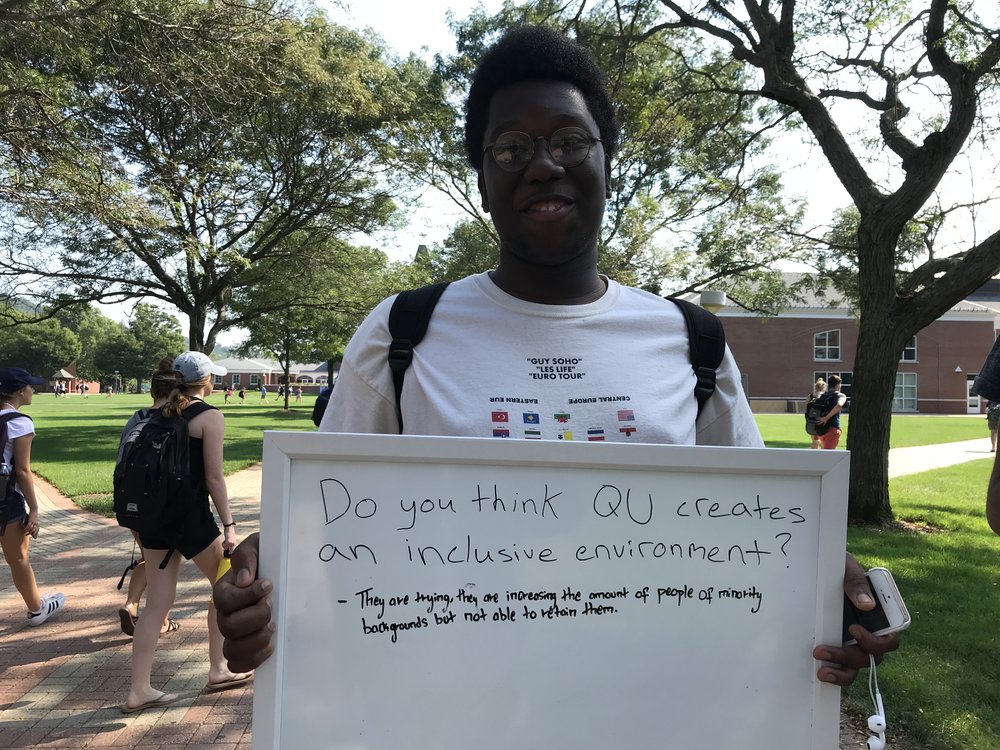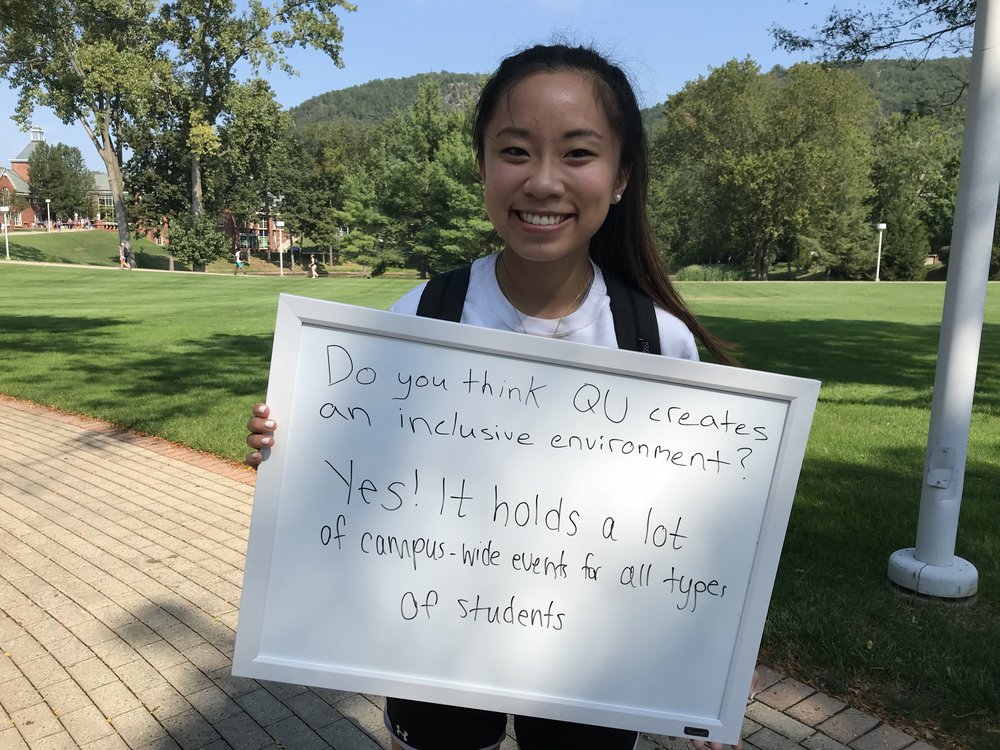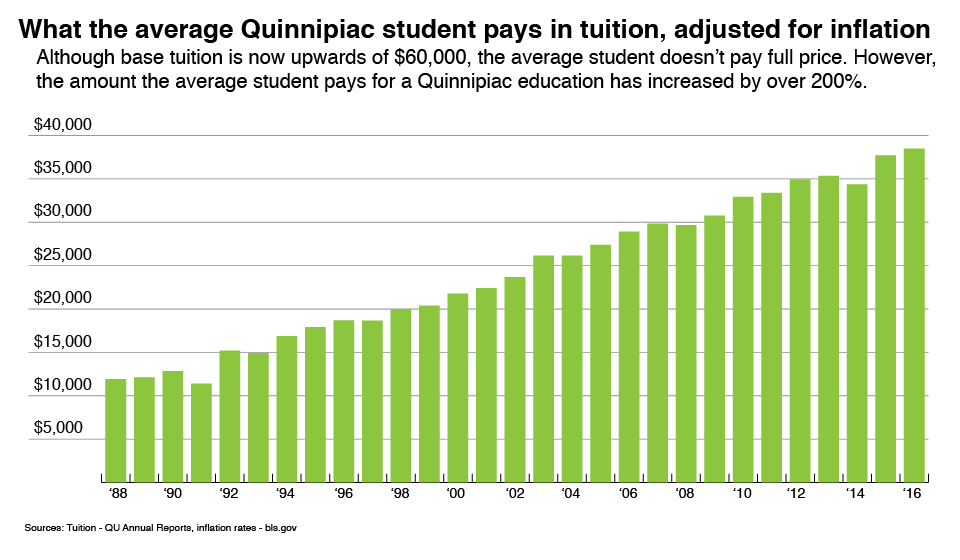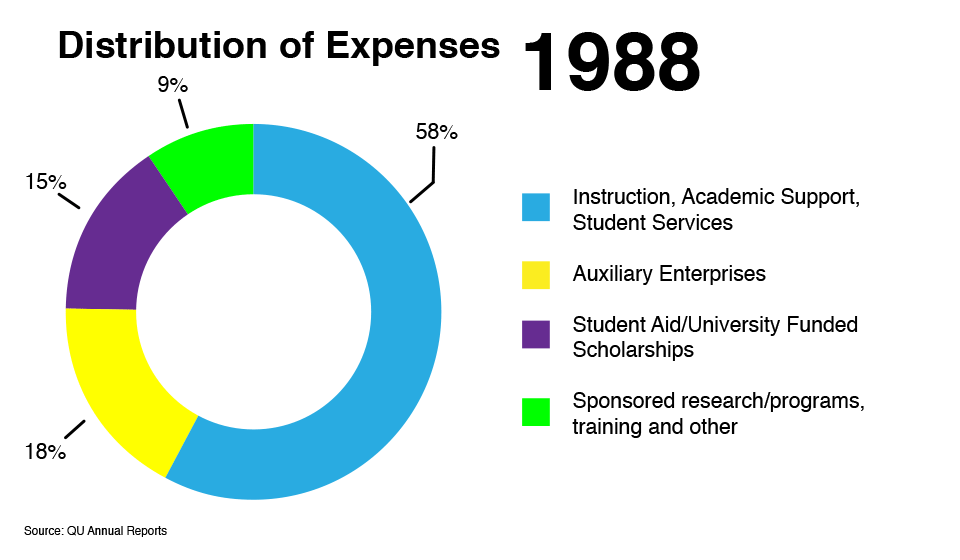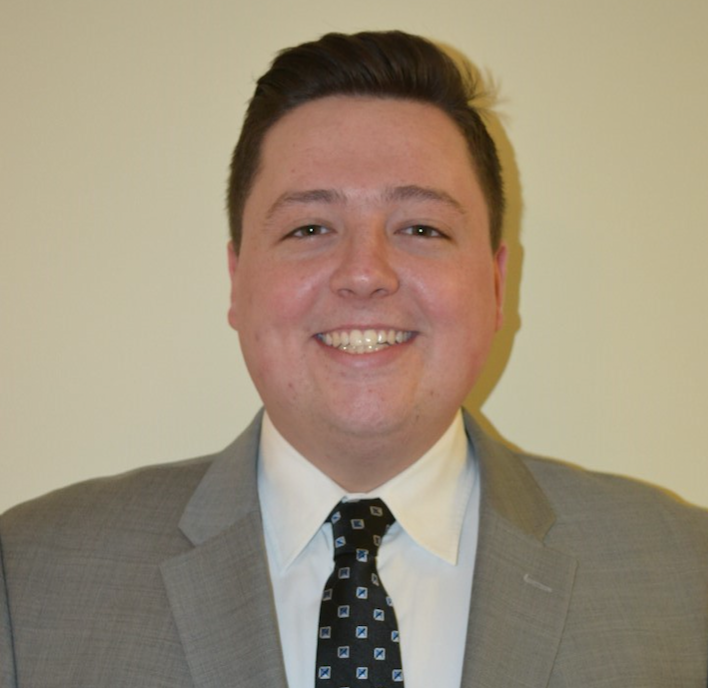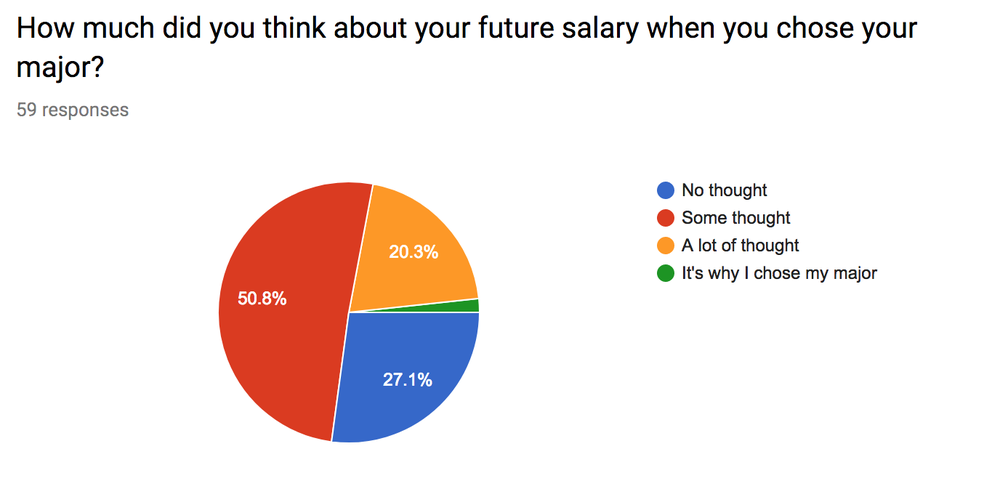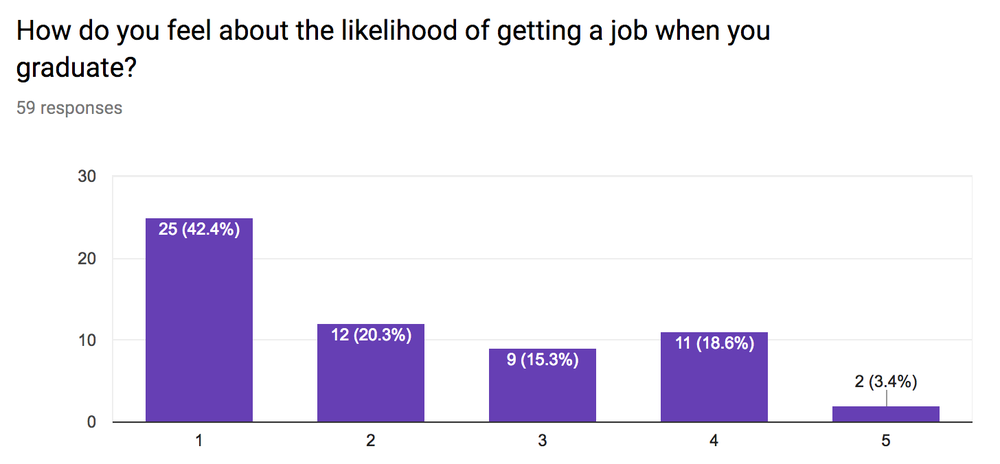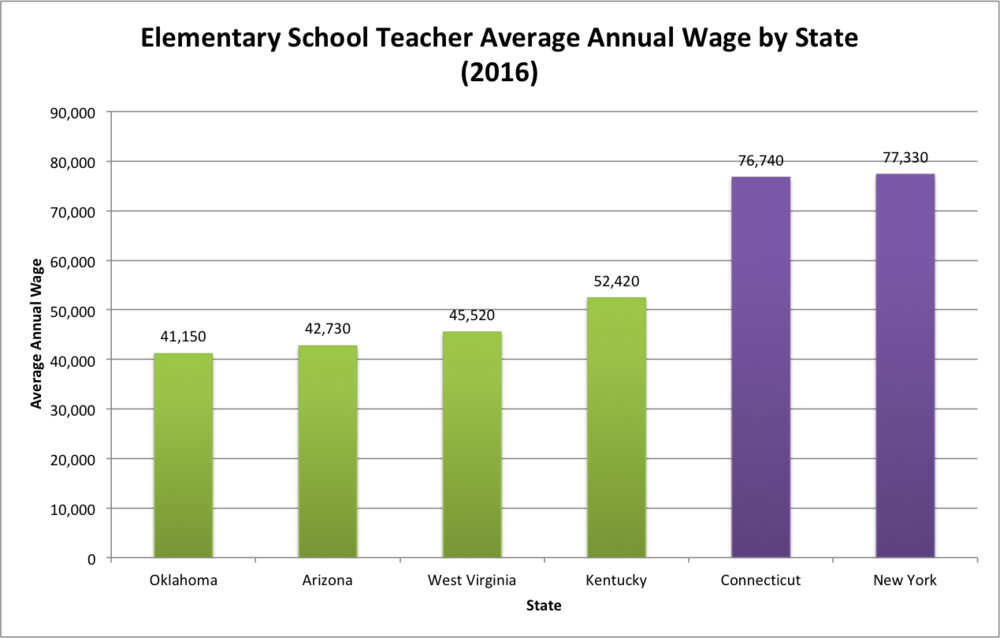By: Sarah Russell and Randy Del Valle
Two years ago on Sept. 19, Quinnipiac University exploded with controversy as a Snapchat circulated the campus. The snap included an image of a caucasian female student with a black-colored face mask on. The caption read, “black lives matter.”
The university faced major backlash as the image hit mainstream news media and officials tried to keep the image from being a representation of the school. The student who took the picture and wrote the caption left the school, and the student in the photo was left trying to rebuild her reputation.
And faculty, staff, and students had to determine how to promote a more diverse culture where this would never be an issue again.
Fast forward to today, university administrators say they have spent the last two years working on different ways to bring a more diverse mix of people to campus and to build an environment where students and staff feel they belong and are respected.
Yet even with the university trying to promote diversity and inclusion, many students and staff still say there’s more work to be done.
Chief Diversity Officer Don Sawyer said whenever people talk about an inclusive campus, people tend to only focus on students of color and that’s not what inclusive excellence is about.
“Inclusive excellence is about making sure that your campus is welcoming to all people,” Sawyer said. “We want to build a campus where everyone feels that they are a part of this Bobcat nation.”
“When we make the campus a welcoming space, it’s not just for those who are underrepresented or those who are marginalized, it creates a campus environment where everyone feels welcomed.”
Sawyer says inclusion and diversity are considered a “hot button topic,” and that people often don’t want to talk about things of that nature.
“Some people are afraid to talk about the topic, because some people think ‘ok if I talk about race people are going to think I’m a racist, you know I don’t want to say the wrong thing if I say the wrong thing people are going to smear my name.’”
“When we talk about inclusion people say we want to increase the number of underrepresented people on campus, but we have to talk about what does it mean once they get here,” Sawyer said. “So if the campus is not prepared for the increase, then I think the increase doesn’t make sense.”
“So we have to work with one another to create a campus that’s welcoming to everyone and then we can actually start talking about inclusion.”
Sawyer also explained that inclusion works when people have dialogue, interaction and perspective taking.
“If we have dialogue and then we have intentional forums, intentional programs, intentional opportunities with people to interact during that dialogue interaction. We are able to understand the perspective of others,” Sawyer said. “Understanding the perspective of others, understanding the reality of others, it broadens our mindset, it broadens our scope. Just because something is not our reality doesn’t mean that it’s not a reality.”
The Quinnipiac Bias Incident Response Team (QBIRT) reviews reports submitted by students online. The team looks at the reports to see if there’s a need for an investigation.
“What we’re going to be doing is to have an online submission portal where you can submit things whether it’s for Title IX, sexual harassment or bias incident or things of that nature where it will be a one stop shop for you to get educated,” Sawyer said. “It will also be a space where you can report anonymously.”
Edgar Rodriguez, chief of public safety, also admits that diversity and inclusion problems on campus still exist, but that the entire university continues to work on these issues.
“I think it’s very important to have those discussions and collaborate with different organizations and different students and get to the bottom of it,” Rodriguez said.
“You have to get people involved. You can’t do it on your own. This is not a public safety issue. This is not a Res Life issue. This is a community issue.”
Rodriguez says he plans to create a Community Partnership Advisory Board, a diverse group that will come together to discuss public safety issues.
“What’s going on out there, and what would you like to see, and are some people being stopped at gates, some are not?” said Rodriguez.

A quote from Chief of Public Safety Edgar Rodriguez
He wants to include faculty, a student, a member of the Student Government Association and a professor from the Criminal Justice program among others to bring a cohesive group together and have all students feeling safe and protected on campus.
“How do we handle that, how do we treat everybody the same, how does everybody be treated equally. It’s not about a color, it’s about being a human being. It’s about treating everybody with respect.”
Rodriguez wants his staff to reflect the school community and has increased the diversity ratio in his department from 4 percent to 25 percent.
Abbie O’Neill in the Department of Cultural and Global Engagement said progress is being made on making Quinnipiac more inclusive.
“There’s a large population of students who do not feel [Quinnipiac is] inclusive. I think it’s making strides to become more inclusive, but it’s not there yet,” said O’Neill, a specialist for student engagement.
She says the school has been starting to support different multicultural groups and events, which could help students feel included on campus.
“I think highlighting the multicultural student organizations as places that students can go and either learn or become a part of something is a step in the right direction,” O’Neill said.
Recent changes the school has made include opening the multicultural suite for the multicultural organizations, creating the multicultural student leadership council and, for the first time, running a multicultural welcome week. Different events were put on by multicultural organizations each day during the week, ending with the culture fair.

Senior Layomi Akinnifesi thinks campus diversity is improving slowly but surely, but that inclusion – and how comfortable students and staff are with their differences – is more of the problem.
“Everyone is in their circles and bubbles and that’s what we need to improve on,” Akinnifesi said.
For example, Akinnifesi said that the Greek organizations don’t really work with the multicultural Greek organizations, and that some students don’t see the black or Latino student unions as being for them.
Some students said they don’t think that Quinnipiac is diverse at all.
“Just walking around you can notice that it’s not a diverse campus,” sophomore Andrea Reyes said.
“This is a PWI (predominantly white institution) so a majority of my classes I’m like one of the only person of color in the class,” sophomore Esau Greene said.
Greene believes that you can see the lack of diversity on campus, but that the school is working to make changes so that all feel welcome.
“There’s a pretty big disparity, but I do believe we are working our hardest to change and create a really diverse campus,” Greene said.

Students anonymously give their thoughts on how Quinnipiac can be more diverse and inclusive
As President Olian has begun her time at Quinnipiac, university staff believes that she will push further to make the school diverse and inclusive of all.
When this school year started freshmen were brought up to York Hill campus for a welcome ceremony where President Olian – as well as Mark Thompson, executive vice president, and Don Sawyer, chief diversity officer – all discussed the administration’s goal to be an inclusive and diverse campus.
“I think with this new administration you’re going to see a lot of changes for the better and I think you’re going to see a big change in the next couple of years. I think everybody’s on board, everybody believes this is the way to go,” said Rodriguez, the public safety chief. “This is a healthy way for us to move forward.”











